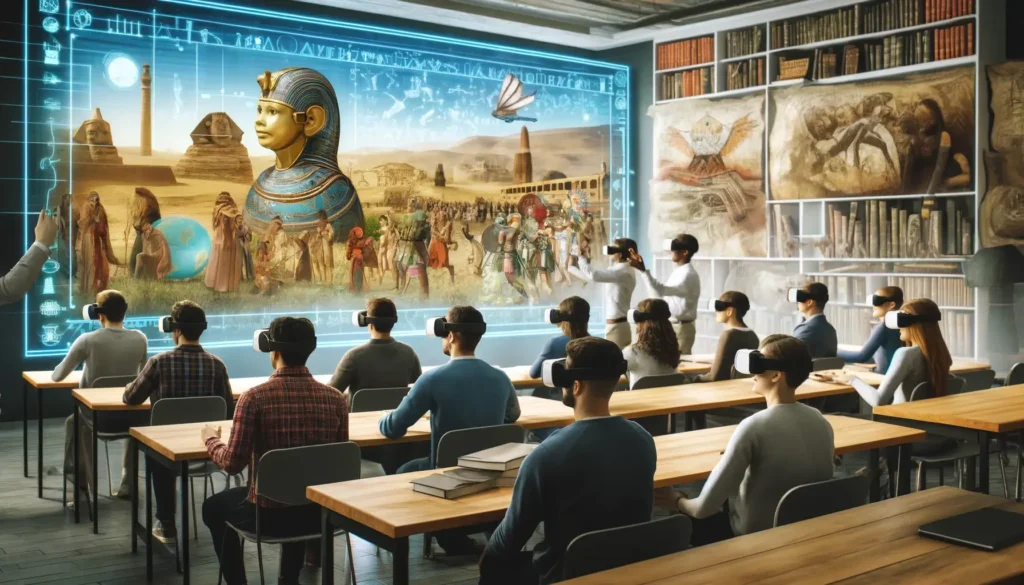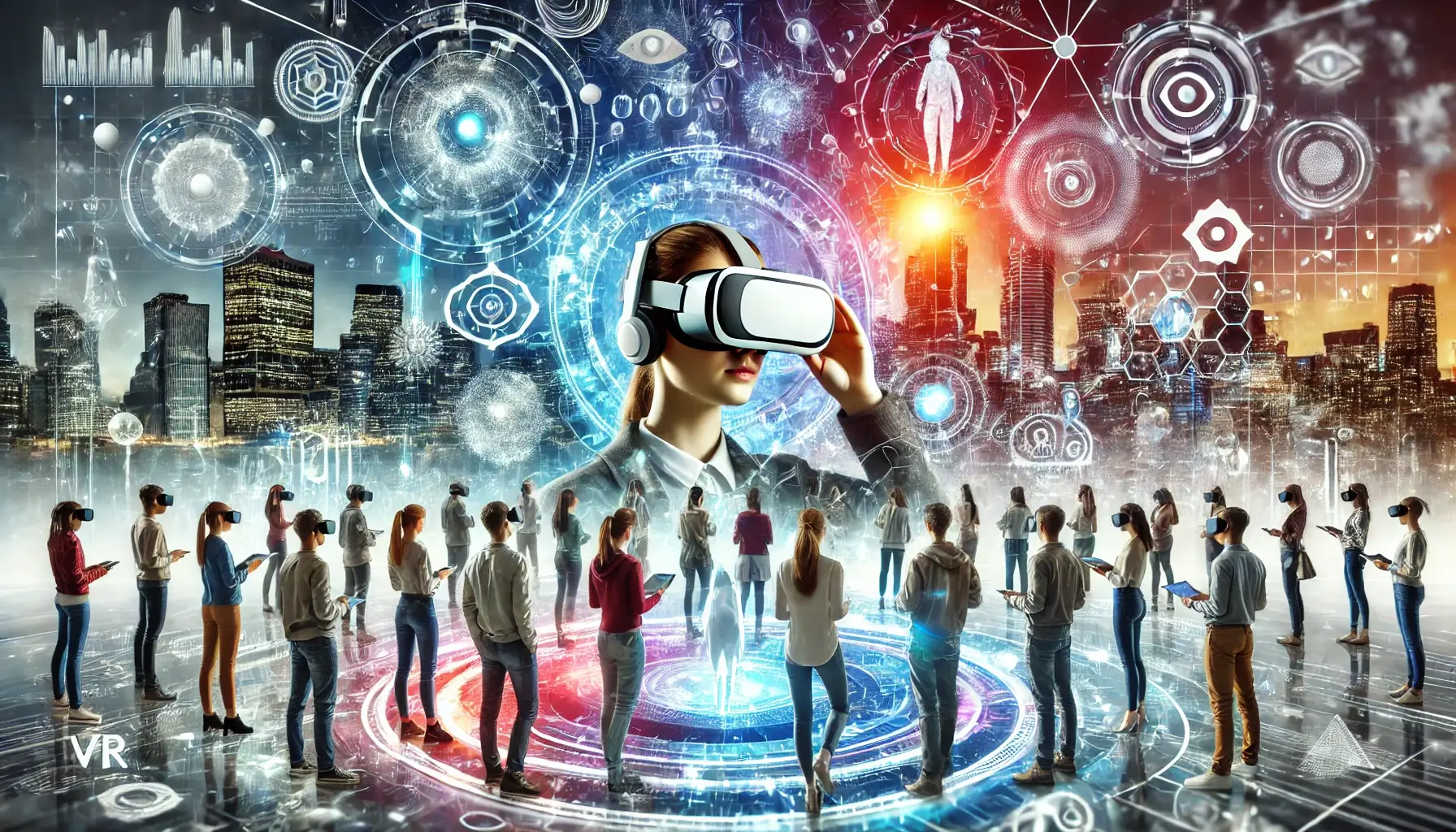Exploring Virtual Reality Trends: Insights from Geekzilla Tio Geek
Not only a technological wonder, virtual reality (VR) technology opens a path for reinventing human connection with digital surroundings. We use specialist sites like Geekzilla Tio Geek for the most innovative ideas and analyses as we explore this ever-changing area. The vanguard of VR advancements is investigated in this paper together with important trends, applications, and issues influencing the VR scene of today.
Understanding these changes is essential for both industry experts and aficionados to take advantage of chances in gaming, education, and elsewhere. For everyone who wants to be on top of technology, Geekzilla Tio Geek is an invaluable tool as it offers a prism through which we can study how VR keeps changing our virtual and real-world experiences.
Overview of Current Virtual Reality Technology
From a speculative fiction concept to a real, immersive technology within reach of consumers and companies, virtual reality has evolved. Fundamentally, VR is the use of computer technology to generate a virtual reality that can be interacted with in apparently real terms via different devices such as headsets, gloves, and body suits. Offering experiences ranging from sophisticated interactive games to professional training simulations, eminent platforms such as Oculus Rift, HTC Vive, and PlayStation VR are stretching the bounds of what VR can accomplish.
Recent VR technological developments have concentrated on improving visual realism, lowering latency, and raising VR hardware’s comfort and accessibility. VR becomes increasingly fascinating and useful for a larger audience as we keep seeing advancements in display resolutions and tracking capabilities, therefore preparing the ground for general adoption in many fields.
Increased Accessibility
A fundamental change in the development of virtual reality technology is its democratization. Not just technologically but also financially, VR has become increasingly available recently. Innovations have led to more affordable VR headsets, such as the Oculus Quest, which operates without the need for an expensive PC or complicated setup. This accessibility allows a broader user base to experience VR, therefore extending its use outside high-end games and into common applications.
Companies employ VR for virtual meetings, therefore highlighting the useful advantages of VR in many contexts; schools are starting to use VR for immersive learning opportunities. Future expansion of VR depends on this trend toward accessibility as it lets more people investigate and use this transforming technology.
Expansion into New Markets
The way virtual reality is entering other markets is evidence of its adaptability and general appeal. Beyond gaming, industries including healthcare and real estate have started using VR to provide cutting-edge offerings.
For example, real estate brokers show potential purchasers homes via VR tours so they may investigate areas without really visiting them. By means of therapeutic applications and training simulations for surgeons and medical students, VR is transforming patient treatment in healthcare. These cases show how VR may go beyond conventional market limits and produce unique experiences improving consumer and professional activity.
Social VR
Emerging as a dynamic trend reshaping our digital interaction with others is social VR. Users of platforms like VRChat and AltspaceVR may engage in three-dimensional virtual environments where they may attend events, meet new people, and express themselves in ways free from physical restrictions.
The need for more immersive and interesting forms of social interaction—especially important in times of more distant communication—is driving the growth of social VR systems. Social VR presents a fresh way for building community and shared experiences as it develops, therefore stretching the social dynamics of virtual environments. Must read fintechzoom CRM stock
Insights from Geekzilla Tio Geek on VR Applications
Geekzilla Tio Geek brings unique insights into the applications of virtual reality across various domains, highlighting its transformative potential. In gaming, VR has introduced a new level of immersion, with games like “Half-Life: Alyx” setting benchmarks for what is possible. Apart from entertainment, VR is invading the field of professional training where it is assisting medical personnel, firemen, and pilots in getting ready for events that would be too risky or difficult to go through in real life.
For the customer, VR is changing consumer interaction with products and shopping. Virtual storefronts and interactive product demos provide a fresh approach of interaction with companies, so purchasing turns into more engaging and educational. These applications underscore VR’s versatility and its capacity to redefine traditional activities, making Geekzilla Tio Geek’s insights invaluable for anyone keen to understand VR’s practical impacts.
Gaming
Gaming is most likely one of the most active and quick changing fields in the virtual environment. Goddess of Geekzilla Tio Geek has gone into great length on how games like “Beat Saber” and “The Elder Scrolls V: Skyrim VR” have changed the expectations and experiences of the players Regular gaming cannot equal the degree of immersion in VR gaming that exists there.
It lets users engage in simple, straightforward physical interaction with the game environment This increased involvement is not only fueling the hardware sector to create devices that can handle more sophisticated and graphically demanding VR experiences but also improving game development advances. Growing VR gaming is a major factor driving VR technology’s general development and acceptance.
Professional Training

geekzilla tio geek
In fields requiring high-risk training environments, professional VR training offers the most amazing advantages. Geek Godzilla With its solutions, Tio Geek notes how it may be reasonably, repeatable, and affordable to train different sectors. For teaching aviators, VR simulations, for instance, show them cockpits and emergency scenarios free of the risk involved in real flying.
In medicine as well, VR lets surgeons practice difficult operations free from ethical or pragmatic questions about utilizing a real patient. VR is a great tool in professional training as it allows one to replicate sensitive surroundings and scenarios with great accuracy, therefore improving the readiness and skills of highly qualified professionals.
Consumer Experience Enhancements
Another major emphasis for most companies, as Geekzilla Tio Geek describes, is improving the user experience using virtual reality. Virtual reality technology lets users revisit goods and services in entirely different ways.
For example, several automakers let consumers pretest drive automobiles virtually before they visit one. In retail, anyone may access any clothing without changing physically in virtual dressing rooms. These tools not only provide consumers with convenience and extra value but also provide creative ways for companies to promote their goods and stand out in cutthroat industries.
Challenges Facing the VR Industry
Although virtual reality is developing quickly, some issues with this technology might prevent it from realizing its full possibilities. For instance, hardware restrictions on high-powered CPUs and excellent screens causes VR setups to be costly. Moreover, physical discomfort and motion sickness are major obstacles for general acceptance.
Another major problem is the content creation one faces: creating fascinating and varied VR material is expensive and creative job requiring large capital commitment. For developers, this presents challenges. Consequently, growing virtual reality in our life raises more questions about privacy and security; people are always worried about data and information being used inside immersive surroundings. Overcoming these obstacles will be necessary for VR to expand much more and calls both constant innovation and careful regulation.
Hardware Limitations
Hardware-related is one of the toughest obstacles the VR sector deals with. Most of the VR headsets available today depend on tethering to strong computers, which are usually heavy and restrict movement capability. For consumers, other issues such limited battery life, bulky headsets, and a necessity for extra sensors compound to be a hassle.
On the other hand, many consumers find the price tag on high-end VR systems excessively costly, therefore restricting the possible demand for this sector. Overcoming such difficulties like lightening the devices, raising their power, and lowering their cost requires ongoing development in VR hardware. VR can only realize its great potential and get more acceptance by means of such developments.
Content Development
Creating engaging VR material that exceeds all media’s limitations is a difficulty in the VR space. To keep someone fascinated in a really enthralling atmosphere, the immersive surroundings demand interactive and very compelling material. From more complicated narrative tactics to greater production expenditures, these criteria are rather demanding for the creators.
Furthermore suppressing creativity and extending development cycles will be the absence of standardized content production frameworks and tools. More strong development platforms and technologies that may reduce the entrance obstacles for producers and promote a greater range of content will help to build a vibrant VR content ecosystem.
Privacy and Security
This brings to light serious privacy and security issues. VR’s immersive character allows a variety of data collecting: people’s motions, facial expressions, even emotional reactions to particular circumstances – all of which are exploitable if left unguarded.
Content and interaction in social VR, where users engage in virtual environments, present a special difficulty as they could lead to harassment and violence. This would need appropriate security measures in addition to rigorous privacy policies to inspire people into embracing VR technology and help them to develop their confidence. The VR sector’s sustained development depends on addressing these problems.
The Future of VR According to Geekzilla Tio Geek
As fresh discoveries enable further integration of the virtual reality into our life, VR seems bright. With developments in artificial intelligence and machine learning, VR environments will be far more dynamic and responsive, according to Geekzilla Tio Geek specialists, which will make them a more customized and fascinating experience.
Furthermore, as VR technology develops, we can see even powerful but more intuitive gadgets for instance VR systems under control by thinking or eye motions. From improved therapeutic treatments to enhanced learning settings, these would present fresh VR application opportunities. VR is going to transform our digital connections with ongoing investment and creativity, offering fresh means of communication, education, and exploration.
Conclusion:
The trip throughout the virtual reality trends Geekzilla offers Tio Geek shows the great possibilities as well as the difficulties with VR. For developers, fans, and customers alike, being informed and interacting with the changing VR terrain becomes even more crucial as technology develops.
VR may overcome its present constraints to provide more immersive, simple, inclusive experiences by tackling present issues and grabbing new possibilities. We urge readers to keep investigating and helping the field of virtual reality to guarantee its expansion and applicability in the digital era.
Frequently Asked Questions (FAQs):
Q1: What is virtual reality (VR) and how does it work?
- A1: Virtual reality is a computer-created environment in which users can interact in seemingly real ways through special electronic equipment, including VR headsets and motion-detecting devices. It immerses the user in a digital world by generating realistic images, sounds, and other sensations.
Q2: What are the current leading VR platforms?
- A2: Some of the leading VR platforms include Oculus Rift, HTC Vive, and PlayStation VR. These platforms offer a range of experiences from gaming to professional simulations, each with its own set of capabilities and requirements.
Q3: How is VR making technology more accessible?
- A3: VR technology is becoming more accessible through the development of more affordable and user-friendly VR headsets. Innovations such as standalone devices that do not require connection to a computer or smartphone are lowering the entry barrier for users.
Q4: In what new markets is VR expanding?
- A4: VR is expanding into markets beyond gaming, including education, real estate, healthcare, and even tourism. In these fields, VR is used for training, virtual tours, therapeutic settings, and more, offering immersive experiences that provide significant value.
Q5: What are social VR platforms, and what do they offer?
- A5: Social VR platforms are virtual spaces where users can interact with each other in a three-dimensional digital environment. These platforms, like VRChat and AltspaceVR, allow people to meet, conduct events, play games, and socialize in ways that mimic real-world interactions.
Q6: What are some of the challenges currently facing the VR industry?
- A6: The VR industry faces several challenges, including hardware limitations, such as the need for high-processing power and high-quality displays, motion sickness, and the high cost of VR systems. Additionally, creating engaging and diverse content and addressing privacy and security concerns are significant hurdles.
Q7: How can VR enhance consumer experiences?
- A7: VR can enhance consumer experiences by providing more interactive and immersive ways to shop, learn, and engage with content. For example, VR enables virtual try-ons in fashion, detailed previews of vacation destinations in tourism, and interactive experiences in museums and galleries.
Q8: What future developments are expected in VR technology?
- A8: Future developments in VR technology are expected to include more advanced AI integration, making VR environments smarter and more responsive. Improvements in hardware, such as lighter, wireless headsets with longer battery life and better sensory outputs, are also anticipated.
Q9: How can individuals and businesses prepare for advancements in VR?
- A9: Individuals and businesses can prepare for advancements in VR by staying informed about the latest developments, investing in VR training and equipment, and considering how VR can be integrated into their operations or daily lives to enhance productivity, learning, and customer engagement.
Q10: Where can I follow Geekzilla Tio Geek for more updates on VR trends?
- A10: You can follow Geekzilla Tio Geek on their official website, subscribe to their newsletter, and follow them on social media platforms like Twitter, Facebook, and Instagram for regular updates on VR trends and other technology insights.






